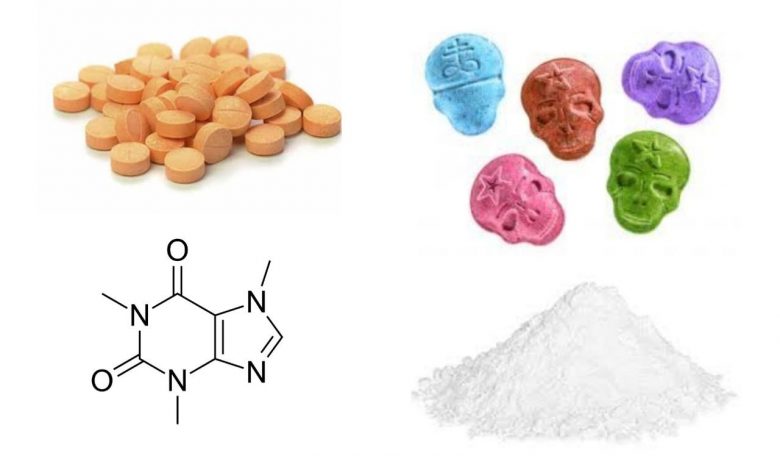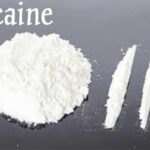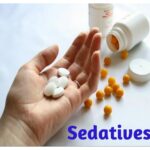Stimulant Drugs Examples, Uses, Side Effects, and Interactions

What are stimulants used for?
Stimulants, also known as psychostimulants or colloquially as uppers is an overarching term that covers many drugs including those that increase the activity of the central nervous system and the body, drugs that are pleasurable, and invigorating, or drugs that have sympathomimetic effects.
Stimulants are widely used throughout the world as prescription medicines as well as without a prescription (either legally or illicitly) as performance-enhancing or recreational drugs. Among narcotics, stimulants produce a noticeable crash or comedown at the end of their effects. Illicit stimulants are usually snorted, swallowed, smoked or injected. Prescribed stimulants are usually taken orally, and the duration of their effects differs depending on the type.
What are the effects of stimulants?
Stimulants generally speed up the messages between the brain and the body. This can cause:
• agitation
• reduced appetite
• sleeplessness.
• your blood pressure to go up
• your body temperature to go up – leading to heat exhaustion or even heat stroke
• your heart to beat faster
You can feel more awake, alert, confident or energetic.
Larger doses can cause anxiety, panic, seizures, stomach cramps, and paranoia.
Short-Term Effects: The short-term effects of stimulants include exhaustion, apathy, and depression—the “down” that follows the “up.” It is this immediate and lasting exhaustion that quickly leads the stimulant user to want the drug again. Soon he is not trying to get “high,” he is only trying to get “well”—to feel any energy at all.
Long-Term Effects: Stimulants can be addictive. Repeated high doses of some stimulants over a short period can lead to feelings of hostility or paranoia. Such doses may also result in dangerously high body temperatures and an irregular heartbeat.
People who use stimulants regularly can develop dependence and tolerance to them. Tolerance means they need to take larger amounts of stimulants to get the same effect.
Dependence on stimulants can be psychological, physical, or both. People who are dependent on stimulants find that using the drug becomes far more important than other activities in their life. They crave them and find it very difficult to stop using them.
People who are psychologically dependent on stimulants may feel an urge to use them when they are in specific surroundings or socializing with friends.
Physical dependence occurs when a person’s body adapts to the stimulants and gets used to functioning with the stimulant present.
Stimulant Drugs Examples
Stimulant drugs examples include:
• Amphetamines: Amphetamines are stimulant drugs. They make the messages between your brain and body move faster. As a result, you are more alert and physically active. Amphetamines include prescription stimulants used to treat Attention-deficit hyperactivity disorder (ADHD). Used as a study aid, to stay awake, and to suppress appetites. Prescribed as Adderall®, Concerta®, Dexedrine®, Focalin®, Metadate®, Methylin®, Ritalin®. The most frequently prescribed stimulants as of 2013 were lisdexamfetamine (Vyvanse), methylphenidate (Ritalin), and amphetamine (Adderall).
• Caffeine: This is a stimulant that increases activity in your brain and nervous system. It also increases the circulation of chemicals such as cortisol and adrenaline in the body. In small doses, caffeine can make you feel refreshed and focused. Caffeine can improve mood and help people feel more productive. It is believed to work by blocking the neurotransmitter adenosine’s receptors, increasing excitability in the brain. Caffeine is naturally found in the leaves and fruits of some plants. It is in coffee, black and green tea, cocoa, cola soft drinks, and energy drinks. It may also be in chocolate bars, energy bars, and some non-prescription medications, such as cough syrup and slimming tablets.
• Cocaine: This is an addictive stimulant drug made from the leaves of the coca plant native to South America. Powder cocaine is a white powder (which scientists call a hydrochloride salt). Street dealers often mix cocaine with other substances like cornstarch, talcum powder, or sugar. They also mix cocaine with stimulant drugs like amphetamines, or synthetic opioids, including fentanyl, which has caused deaths. Crack is another form of cocaine that has been processed to make a rock crystal that people smoke. The term “crack” refers to the cracking sound the rocks make when they are heated. According to a 2015 report, the percentage of the world population that had used cocaine during a year was 0.4%.
• Ecstasy (MDMA – methylenedioxymethamphetamine): This is a synthetic drug that acts as a stimulant and hallucinogen. It produces an energizing effect, distortions in time and perception, and enhanced enjoyment from sensory experiences. It has also been described as an entactogen—a drug that can increase self-awareness and empathy. Ecstasy has effects like other stimulants and often makes the user feel euphoric. Molly floods the brain with dopamine and serotonin, causing the “ecstasy” and euphoric highs related to the drug. However, the “crash” that comes after may not be worth the feel-good. Chronic users have reported feeling extremely depressed several days after periods of use.
• Nicotine (tobacco): Nicotine is a stimulant drug that speeds up the messages travelling between the brain and body. It is the main psychoactive ingredient in tobacco products. Nicotine acts as both a stimulant and a depressant to the central nervous system. Nicotine first causes a release of the hormone epinephrine, which further stimulates the nervous system and is responsible for part of the “kick” from nicotine-the drug-induced feelings of pleasure and, over time, addiction.
How stimulant drugs differ from depressant drugs
Stimulant drugs act by speeding up every aspect of the body and brain, which are controlled by the central nervous system. Stimulants often produce a euphoric effect, with some people feeling more alert, energetic and confident. In contrast, depressant drugs act by slowing down bodily functions and cognitive processes controlled by the central nervous system. They typically relieve anxiety. They don’t necessarily make a person feel depressed, but rather reduce coordination and impair concentration and judgment.
Drug Interactions
It is important to disclose any other drugs or medications that you ingest with your doctor before taking a stimulant, as adverse drug interactions can occur. Certain substances may lose their effectiveness or negatively interact if taken with stimulants:
• Antidepressants should be avoided since their use with psychomotor stimulants produces exaggerated cardiovascular effects.
• Anticoagulants interfere with the metabolism of psychomotor stimulants.
• Amphetamines increase the effects of the neurotransmitter norepinephrine, which aids in the body’s stress response.
• Phenothiazine (chlorpromazine), an antipsychotic, counteracts the effects of psychomotor stimulants.
• Amphetamines may antagonize the outcomes of antihypertensives (blood pressure medication).
• Amphetamines may decrease the rate of the absorption of phenytoin (an anticonvulsant).
• Insulin requirements may decrease while using amphetamines.





